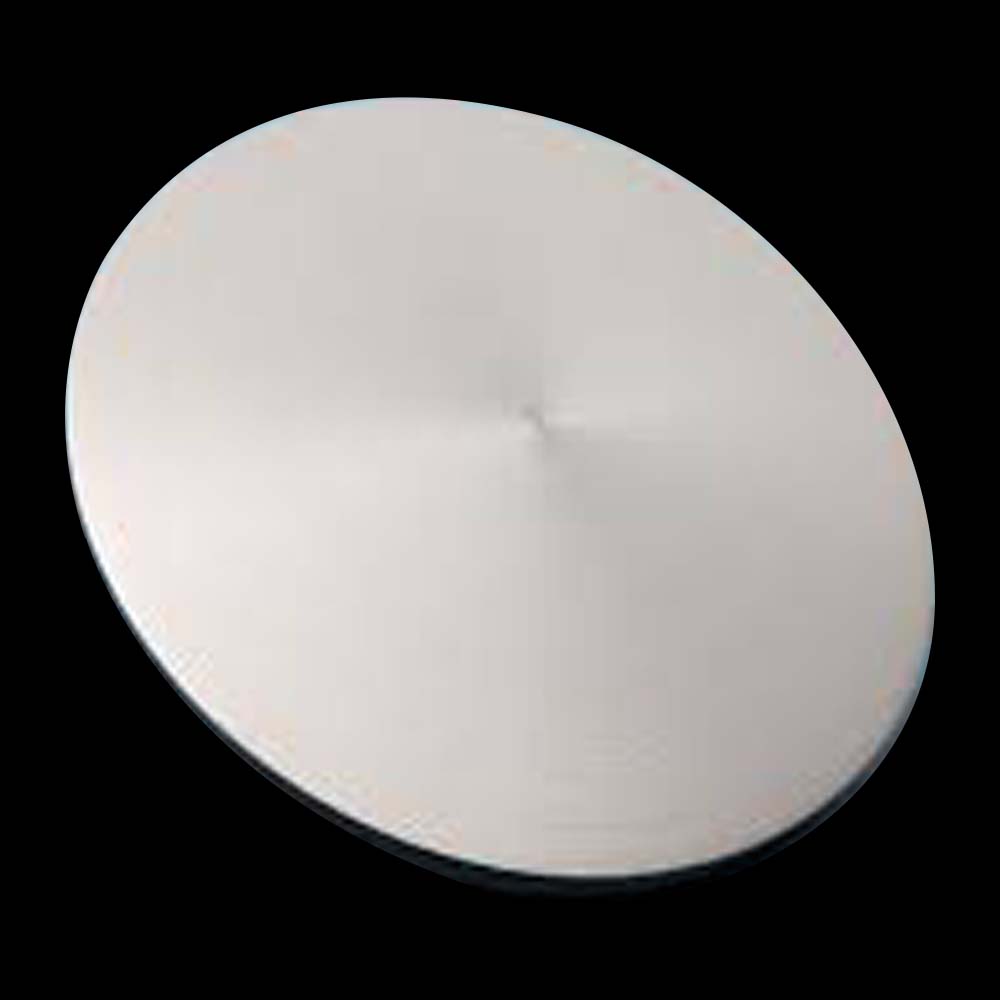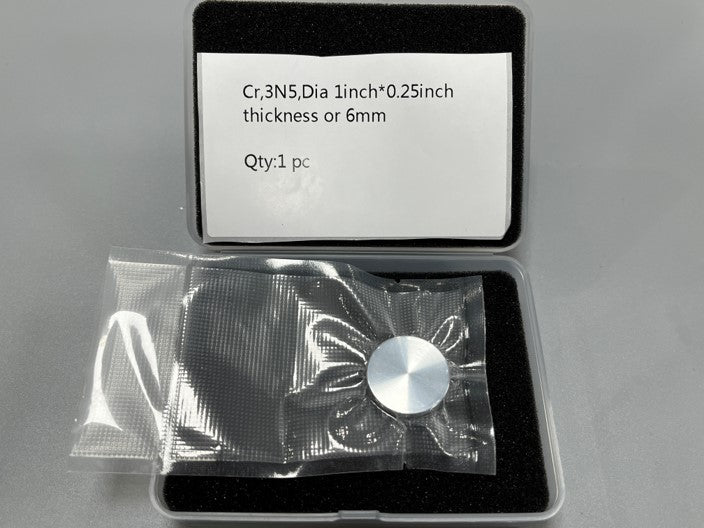Target Materials
Chromium (Cr) Sputtering Target
Chromium (Cr) Sputtering Target
Couldn't load pickup availability
| Material | Chromium |
| Formula | Cr |
| Purity | 99.99% |
| Typical Substrates | Si, Ge, GaAs, Glass and various other metal |
| Related Materials | Ti, Ni, Co, Al |
Chromium (Cr) thin films are widely used in research and commercial applications across a range of industries. Cr thin films are used in flat panel displays, hard coatings, optical communications, magnetic data storage devices and electron microscopy. Cr thin films are commonly used to create anti-reflective coatings, protective layers, multilayer optical films, and magnetic films. The utility of Cr thin films stems from their excellent electrical and optical properties, such as reflectivity, electrical conductivity, and thermal stability. Cr thin films also offer low cost and low maintenance as well as high corrosion resistance.
Deposition Conditions for Chromium Films by DC Sputtering
DC sputtering is a common method for depositing Cr thin films, and the deposition conditions will vary depending on the desired properties of the film. The sputtering power, pressure, substrate bias, distance target-sample, and substrate temperature must all be optimized for the best results. Pressure is also important, as higher pressures can produce finer grain size and more uniform films.
Deposition Conditions for Chromium Films by RF Sputtering
RF sputtering is another common method for depositing Cr thin films and the deposition conditions are similar to those used in DC sputtering. The substrate bias, distance target-sample, and substrate temperature must also be optimized for the best results. Generally, higher substrate bias and distance target-sample will produce finer grain size and more uniform films, while lower substrate bias and distance target-sample will result in rougher, less uniform films.
Other Techniques for the Deposition of Chromium Thin Films
Apart from sputtering, evaporation, chemical vapor deposition (CVD), and pulsed laser deposition (PLD) can be used to make Cr thin films. Evaporation is a popular method for depositing Cr thin films as it is relatively inexpensive and easy to control. CVD is a process used to deposit thicker films with better uniformity
What Substrates Permit Epitaxial Films of Cr
The most common substrates used to produce epitaxial Cr films are Si, Ge, and GaAs. The substrates must be highly oriented and have good lattice match with the Cr film in order for the epitaxial film to form. The deposition conditions must also be optimized for the best results.
What Substrates Permit Quality Polycrystalline Films of Cr Polycrystalline
Cr films can be formed on a variety of substrates including glass, metal, and polymers. The most common substrates used to produce polycrystalline Cr films are glass, polyimide, stainless steel, and aluminum.
Research Papers on the Deposition of Quality Chromium Thin Films
- I.M. Su, et al., “Fabrication of chromium thin films on glass substrates by DC magnetron sputtering”, Applied Surface Science, vol. 454, pp. 612-618, 2018.
- W.S. Chiu, et al., “Investigation of the deposition of chromium thin films by pulsed laser deposition”, Thin Solid Films, vol. 516, pp. 5919-5925, 2008.
- M. Karsak, et al., “Influence of substrate temperature on properties of chromium thin films deposited by RF sputtering”, Materials Science and Engineering: B, vol. 64, pp. 75-81, 1999.
- S.H. Kim, et al., “Deposition of chromium thin films by RF magnetron sputtering”, Thin Solid Films, vol. 515, pp. 4202-4208, 2007.
- W.S. Chiu, et al., “Characterization of chromium thin films deposited by pulsed laser deposition”, Thin Solid Films, vol. 517, pp. 5569-5573, 2009.
Materials
Materials
Shipping & Returns
Shipping & Returns
Dimensions
Dimensions
Care Instructions
Care Instructions


-
Free Shipping
Wherever you are, get free shipping on orders from Target Materials
-
High Quality Packaging
All our targets are vacuum packed, sealed and protected so they arrive with you exactly how they left from us.


